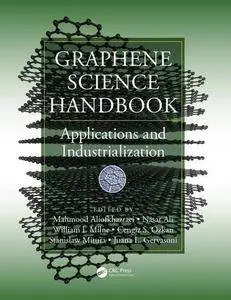Graphene Science Handbook: Applications and Industrialization (Volume 1) by Mahmood Aliofkhazraei and Nasar Ali
English | 2016 | ISBN: 1466591331 | 492 pages | PDF | 64,3 MB
English | 2016 | ISBN: 1466591331 | 492 pages | PDF | 64,3 MB
Explore the Practical Applications and Promising Developments of Graphene
The Graphene Science Handbook is a six-volume set that describes graphene’s special structural, electrical, and chemical properties. The book considers how these properties can be used in different applications (including the development of batteries, fuel cells, photovoltaic cells, and supercapacitors based on graphene) and produced on a massive and global scale.
Volume One: Fabrication Methods
Volume Two: Nanostructure and Atomic Arrangement
Volume Three: Electrical and Optical Properties
Volume Four: Mechanical and Chemical Properties
Volume Five: Size-Dependent Properties
Volume Six: Applications and Industrialization
This handbook describes the fabrication methods of graphene; the nanostructure and atomic arrangement of graphene; graphene’s electrical and optical properties; the mechanical and chemical properties of graphene; the size effects in graphene, characterization, and applications based on size-affected properties; and the application and industrialization of graphene.
Volume six is dedicated to the application and industrialization of graphene and covers:
The design of graphene- and biomolecule-based nanosensors and nanodevices
The use of graphene-based field-effect-transistor (GFET)-like structures as sensing substrates and DNA aptamers as sensing elements
Recent advances in graphene-based DNA sensors
The antibacterial properties of graphene-based nanomaterial (NM)
The chemical and physical properties of graphene and its current uses
The development of sensitive and selective field-effect transistors (FET) biosensors based on graphene
The unique properties of ordered graphene (G)
Various methods currently employed for the production of graphene nanocomposites
The supramolecular chemistry of graphene derivatives, and more



